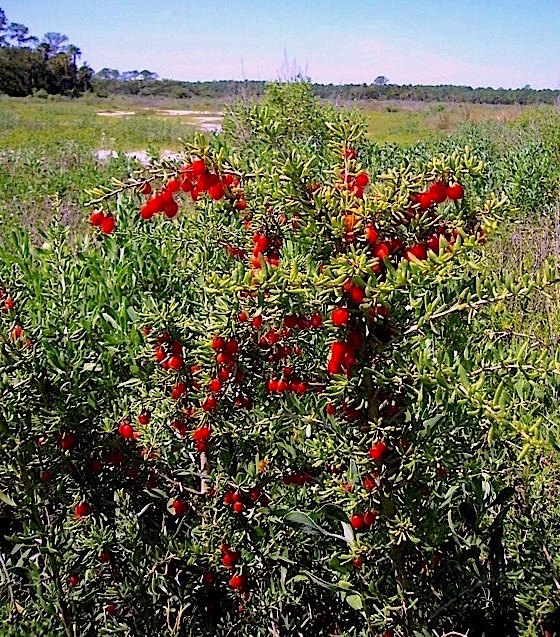
Goji Berries are ripening. Photo by Green Deane
The Christmasberry, of which there are many examples, is poorly named. I have found this particular Christmasberry (Goji) from late November to mid-April. We found and ate some in my foraging class last week south of Daytona Beach. I have also found patches barely blossoming to others fruiting heavily at the same time. Whenever you find Lycium carolinium its looks close to dead if not dying, dry, leafless, covered with Ramalina lichen. Except for the blossom it does not look like a member of the Nightshade family, which it is.
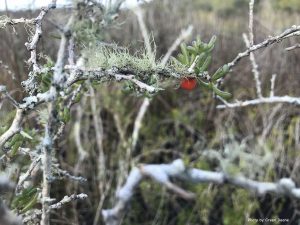
A sweet Goji berry and Ramalina lichen at Spruce Creek. Photo by Green Deane
Most folks are surprised to learn Goji Berries grow in North America. Six species were eaten by Native Americans. Among the edibles species on this continent are L. andersonii, L. berlandieri, L. carolinianum, L. exsertum, L. fremontii, L. pallidum, and L. torreyi. L. ferocissimum is a pest in Australia and their native L. australe was eaten by the Aboriginals. The leaves of the L. halimifolium are cooked and eaten in Eurasia as is the L. chinense. The L. chinense and L. barbarum produce the commercial fruit called Goji Berry. L. barbarum is naturalized in England and L. chinense is naturalized in about 19 states and Ontario.
Interestingly USDA nutrition panels on Goji Berries are unusually short, many of them commercially generated. According to the longest one 100 grams of dried Goji Berries have 349 calories, 14.26 grams of protein, 0.39 grams of fat, 77.06 grams of carbohydrates (45 of them sugar) and 13 grams of fiber. Vitamin C is 48.4 mg, two thirds your daily need, and vitamin A 26822 IU (which is some 11 times your daily need.) Sodium 298 mg, calcium 190 mg, and iron 6.8 mg. That it is high in sodium is not surprising. I always find the species growing where there is brackish water. The species does come with some warmings. As mentioned the Goji is in the Nightshade family so perhaps people with an allergy to that family (tomatoes, peppers, egg plants, tomatillos et cetera) should avoid it. Goji is also high in lectins which can also bother some people. The reason why we can’t eat raw kidney beans is lectins, the poison Ricin is lectins from the Castor Bean Plant. Lectins are carbohydrate-binding proteins. Cereal grains and legumes are high in lectins. Gluten is a lectin and some people are gluten intolerant. The one medical warning associated with Goji berries is they may increase the potency of drugs like Warfarin (making you bleed more easily.) Goji berries also contain atropine in low amounts You can read about the fruit here and watch video here.
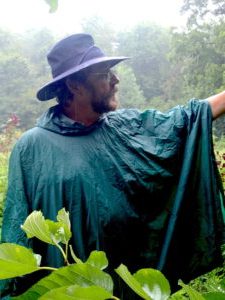
Classes are held rain or shine (but not during hurricanes.)
Foraging classes: the weather had interrupted class scheduling the last few months. Hopefully this Saturday in south Florida, beyond frost, we can squeak in a class before the weather turns again. Dreher Park is a 100-acre site nearly about a century old with plenty of tropical and subtropical plants.
Jan 11th, Dreher Park, 1200 Southern Blvd., West Palm Beach, 33405. Take exit 68 (Southern Boulevard) off Interstate 95 and go east. Entrance to the park is an immediate right at the bottom of the interstate bridge. Follow the convoluted signs to the science center (which is not where the GPS puts you.) Park anywhere. We meet 300 feet northwest of the science museum near the banyan trees. 9 a.m. to noon.
Bring $30 cash per adult on the day of class or click here to pay for your class. If cost is a hardship email me at: GreenDeane@gmail.com.

Sea Rocket is just starting its seasonal run. Photo by Green Deane
Now is the time to look for Sea Rocket starting its season. We have three species of Cakile or Sea Rocket. They show themselves in our winter and preferably on the beach above the rack line. You can also find them blossoming in coastal dunes. The leaves are a bit fleshy but as they are in a tough environment that helps them preserve water. While Sea Rocket can be found along most coasts of the United States, Maine to Washington State, Florida has its own variety, C. lancelolate. There is a video on them here and you can read more about them here.
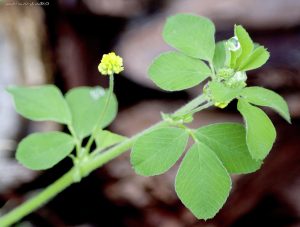
Black Medic is starting it’s seasonal run. Photo by Green Deane
Saw Black Medic for the first time this season. It’s generally considered edible and like many weeds is from Europe. That kind of excludes it from being a significant Native American food (though some sources call it that… It’s a long story.) The headache is that from a distance of about five or six feet (where most people’s eyes are from the ground) Black Medic can look like Hop Clover. Here’s quick way to tell them apart: Hop Clover tends to have red stems, Black Medic has green stems covered with fine white hair and has a longer stem on the center leaf. After the two species go to seed they are easy to sort out: Black Medic has black seeds… hence the name. Hop Clover brown seeds. Black Medic does come with some warmings, read them here.
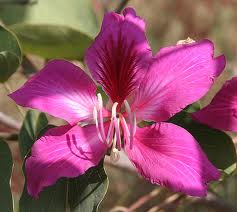
Bauhinia blossoms are edible. Photo by Green Deane
Several Hibiscus species are blooming now including the “Sleepy Hibiscus.” It’s a fairly easy shrub to identify because the bright red blossoms that never unfurl. Also blossoming is the Bauhinia, photo right. It’s a tree that is both easy and challenging at the same time. The blossoms are edible, look nice in salads. Some of the species have edible seeds and some do not. (They are in the pea family and most pea trees — most not all — do not have edible seeds.) Sorting out which Bauhinia you have can be a challenge, nearly as bad as sorting out which Cereus you have. Like the Cereus cactus there are several man-made Bauhinia hybrids and perhaps even some fake botanical names. It can make species identification a real headache though as far as I know all the blossoms are edible. Only “discovered” 145 years ago the blossom of the Bauhinia blakeana is the emblem of Hong Kong. You can read about the Bauhinia here.
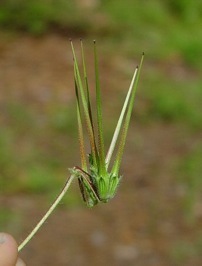
Why the wild geraniums are called stork or crane bills. Photo by Green Deane
Also found this time of year are wild geraniums, usually Cranesbill or Stork’s Bill. (Why one is one word and the other two-words possessive is unknown.) Botanically they are Geranium carolinianum and Erodium circutarium. Neither is great foraging. In fact both are more medicinal than edible but they seem to get mention in a variety of foraging books. The problem is they can be extremely bitter. You might be able to toss a little bit of both in a salad or make a tea from the leaves but that’s about the extent of it. If you have what you think is a Cranesbill or a Stork’s Bill but it has more of a bottle brush blossom than five petals you might have the non-edible Fumaria. It comes up this time of year and from a distance the leaves can remind one of the wild geraniums. They like to grow in the same location and have pink or white blossoms. I’ve never found a reference to this but some people have told me they also eat roots of the geraniums. To read more about the “bills” go here.
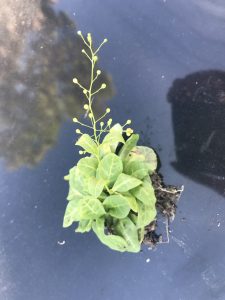
Brookweed salad ingredient and source of vitamin C. Photo by Green Deane
You probably heard the old saying: “A man with a hammer sees nails everywhere.” That is relevant to foraging. Once you learn what a particular plant looks like you will see it more often. That’s what’s happened with me and Samolus valerandi. Brookweed. I first noticed in Jacksonville a couple of years ago. Then perhaps half a year later in Sarasota. A year after that I noticed it in Palm Harbor and Port Orange. It likes to be near fresh water, can tolerate some brackish water and is a small plant with a naked flower/seed spike. Fortunately its flowering arrangement makes it easy to identify. Not much is written about the species, few published books cover it. Mild young leaves are edible raw and are high in vitamin C. That was important when scurvy was a common problem (which is making a comeback in some cities.) Persimmon leaves also have high amounts of vitamin C as dose Firebush berries. Brookweed has a bit more history of use in Europe. Usually young and tender leaves are what’s eaten, older leaves turn bitter. You can read about Brookweed here.

You get the USB, not the key.
All of Green Deane’s videos available for free on You Tube. They do have ads on them so every time you watch a Green Deane video I get a quarter of one cent. Four views, one cent. Not exactly a large money-maker but it helps pays for this newsletter. If you want to see the videos without ads and some in slightly better quality you can order the DVD set. It is nine DVDs with 15 videos on each for a total of 135 videos. Many people want their own copy of the videos or they have a slow service and its easier to order then to watch them on-line. The DVDs make a good gift for that forager you know especially on long, cold winter months. Individual DVDs can also be ordered or you can pick and choose. You can order them by clicking on the button on the top right hand side of this page (if your window is open wide enough.) Or you can go here.

Green Deane Forum
Want to identify a plant? Looking for a foraging reference? Do you have a UFO, an Unidentified Flowering Object you want identified? On the Green Deane Forum we chat about foraging all year. And it’s not just about warm-weather plants or just North American flora. Many nations around the world share common weeds so there’s a lot to talk about. There’s also more than weeds. The reference section has information for foraging around the world. There are also articles on food preservation, and forgotten skills from making bows to fermenting food. One special section is “From the Frightening Mail Bag” where we learn from people who eat first then ask questions later. You can join the forum by clicking on “forum” in the menu. 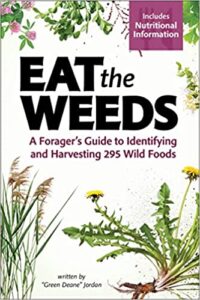
EAT THE WEEDS, the book, 274 plants, 367 pages, index, nutrition charts and color photos. It’s available in many locations including bookstores such as books a million, and Amazon. Most of the entries include a nutritional profile. It can also be ordered through AdventureKeen Publishing. This is weekly newsletter #620. If you want to subscribe to this free newsletter you can find the sign-up form in the menu at the top of the page.
To donate to the Green Deane Newsletter click here.

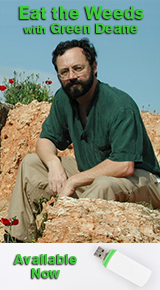
Last night I gave a lecture on native edibles & historical medicinal plants. I mentioned your website a lot. I hope you get a many new subscribers.
Just sending a little message to Ching base I took a class years about a year ago and you’d mentioned how you had a stroke well since then I’ve had a stroke and I think of you often what a friggin struggle this is I’m getting lots of therapy and I’m sure I’ll be fine later on But I can figure those of us have tried to take care of ourselves and crap happens anyway just sharing